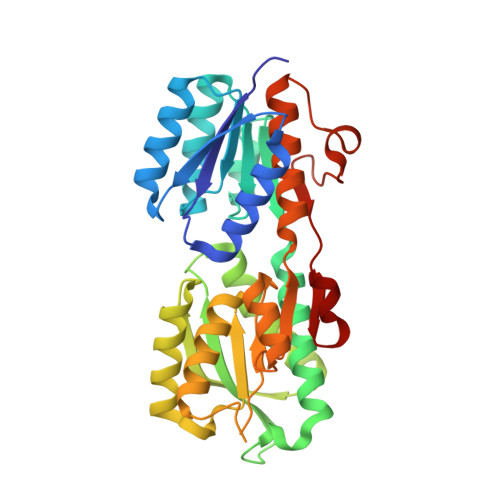Chromophore carbonyl twisting in fluorescent biosensors encodes direct readout of protein conformations with multicolor switching.
Allert, M.J., Kumar, S., Wang, Y., Beese, L.S., Hellinga, H.W.(2023) Commun Chem 6: 168-168
- PubMed: 37598249
- DOI: https://doi.org/10.1038/s42004-023-00982-7
- Primary Citation of Related Structures:
8FXT, 8FXU - PubMed Abstract:
Fluorescent labeling of proteins is a powerful tool for probing structure-function relationships with many biosensing applications. Structure-based rules for systematically designing fluorescent biosensors require understanding ligand-mediated fluorescent response mechanisms which can be challenging to establish. We installed thiol-reactive derivatives of the naphthalene-based fluorophore Prodan into bacterial periplasmic glucose-binding proteins. Glucose binding elicited paired color exchanges in the excited and ground states of these conjugates. X-ray structures and mutagenesis studies established that glucose-mediated color switching arises from steric interactions that couple protein conformational changes to twisting of the Prodan carbonyl relative to its naphthalene plane. Mutations of residues contacting the carbonyl can optimize color switching by altering fluorophore conformational equilibria in the apo and glucose-bound proteins. A commonly accepted view is that Prodan derivatives report on protein conformations via solvatochromic effects due to changes in the dielectric of their local environment. Here we show that instead Prodan carbonyl twisting controls color switching. These insights enable structure-based biosensor design by coupling ligand-mediated protein conformational changes to internal chromophore twists through specific steric interactions between fluorophore and protein.
Organizational Affiliation:
Department of Biochemistry, Duke University Medical Center, Durham, NC, 27710, USA.



















